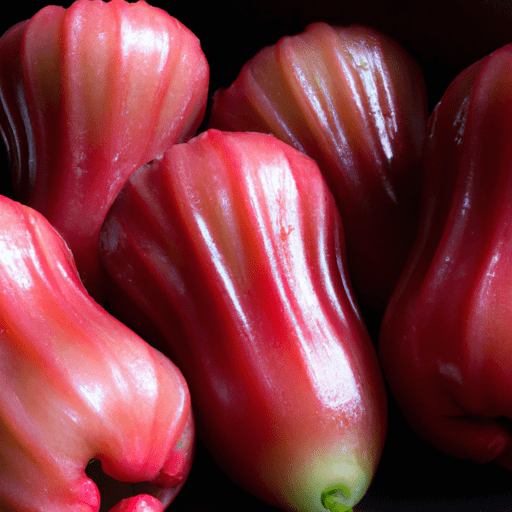The Wonderful World of Bulghur: A Versatile and Nutritious Grain
Are you looking to explore new and exciting grains to incorporate into your cooking? If so, let me introduce you to bulghur - a delicious and versatile grain that deserves a spot in your pantry. With its nutty flavor, incredible versatility, and numerous health benefits, bulghur is a must-try ingredient that will elevate your cooking to a new level.
What is Bulghur?
Bulghur, also known as bulgur or burghul, is a whole wheat grain that has been parboiled, dried, and cracked. It has been a staple in Middle Eastern and Mediterranean cuisines for centuries. This versatile grain is loved for its quick cooking time and ability to absorb flavors, making it a great addition to a variety of dishes.
Taste and Texture
Bulghur boasts a pleasant, nutty flavor with a slightly chewy texture. The cooking process softens the cracked wheat kernels, giving it a texture similar to couscous, although slightly more substantial. The delicate flavor of bulghur allows it to pair well with various ingredients, making it a popular choice for both sweet and savory dishes.
Common Uses
Bulghur’s versatility shines through in a wide range of culinary applications. Here are a few popular ways to incorporate this grain into your cooking:
1. Tabouleh Salad
Tabouleh, a refreshing Middle Eastern salad, is perhaps the most well-known use for bulghur. Mixed with fresh herbs, tomatoes, cucumbers, lemon juice, and olive oil, bulghur adds a delightful chewy texture and nutty taste to this vibrant dish.
2. Pilaf and Grain Bowls
Whether you’re looking to create a hearty vegetarian pilaf or a nourishing grain bowl, bulghur serves as an excellent base. Its ability to absorb the flavors of spices, herbs, and vegetables makes it a delightful canvas for creating a wide range of flavor profiles.
3. Stuffed Vegetables
Bulghur can also be used as a filling for vegetables such as bell peppers, zucchinis, or tomatoes. Mixed with aromatic herbs, spices, and other vegetables, the cooked bulghur adds substance and a delicious savory element to the dish.
Nutritional Benefits
Not only does bulghur bring incredible flavor and texture to your dishes, but it also offers a range of health benefits. Some notable nutritional qualities of bulghur include:
- Fiber: Bulghur is an excellent source of dietary fiber, which promotes healthy digestion and can help control blood sugar levels.
- Protein: As a whole grain, bulghur contains a fair amount of protein, making it a valuable addition to a balanced diet, particularly for vegetarians and vegans.
- Minerals: This grain is rich in essential minerals like iron, magnesium, and phosphorus, supporting bone health and overall well-being.
- Low Fat: With minimal fat content, bulghur is a heart-healthy choice and can aid in weight management.
A Brief History and Fun Facts
Bulghur has a fascinating history that dates back thousands of years. It is believed to have originated in the Mediterranean and Middle Eastern regions, where it has been a dietary staple for centuries. Traditionally, bulghur was made by soaking, steaming, and drying whole wheat berries, a labor-intensive process that is still practiced in some regions.
Fun fact: Did you know that bulghur features prominently in Armenian and Kurdish cuisines? In fact, there is even a traditional Armenian proverb that says, “Bread and bulghur are brothers.”
Bulghur is truly a wonder grain that offers a rich combination of taste, texture, and nutrition. Whether you’re looking to add more variety to your meals or experiment with new flavors, bulghur is a fantastic ingredient to explore. From salads and pilafs to stuffed vegetables, this versatile grain will elevate your cooking and introduce you to a whole new world of flavors. So why not grab a bag of bulghur and embark on a culinary adventure today?
Origin
- Bulghur is a staple ingredient in Middle Eastern and Mediterranean cuisine.
- It has been consumed for thousands of years and is believed to have originated in the Middle East, particularly in the region of ancient Mesopotamia.
Common Uses
- Bulghur is primarily used to make traditional dishes like tabbouleh and kibbeh.
- It can be used as a base for salads, pilafs, stuffings, and soups.
- It is often cooked by boiling or soaking before being incorporated into various recipes.
Nutritional Benefits
- Bulghur is made from whole wheat kernels that have been parboiled, dried, and cracked.
- It is a good source of fiber, protein, and several essential nutrients.
- Bulghur is low in fat and contains no cholesterol.
Unique Properties
- The parboiling process used to create bulghur helps preserve some of the nutrients found in the wheat, making it a relatively nutritious option.
- It has a nutty flavor and chewy texture, adding depth to recipes.
- Bulghur is pre-cooked, which allows for quicker cooking times compared to other whole grains.
Historical Significance
- Bulghur has been a staple in the cuisine of ancient civilizations, including the Babylonians, Egyptians, and Greeks.
- Its longevity in various cultures and the fact that it is still widely consumed today demonstrate its historical significance.
- The use of bulghur has been documented in cookbooks dating back to the 13th century, highlighting its enduring culinary importance.




Use the share button below if you liked it.
It makes me smile, when I see it.